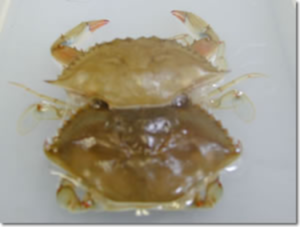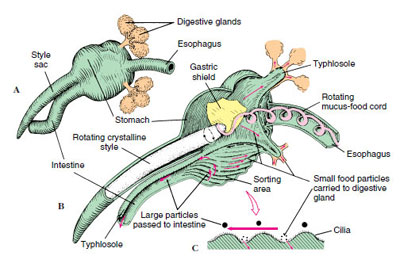
Barnegat Bay is home to several species of crabs, but the Blue crab is the most common and sought after.
Crab molting example: Blue Crab Callinectes sapidus
Molting is the process where blue crabs shed their rigid outer shell (exoskeleton) to allow their bodies to increase in size.
This must be done many times during their lifetime.
As a blue crab mature, its body size increases.
The problem is that its shell is composed of chitin, a hard material that does not grow, so the crab sheds it shell and and a new one is formed on the larger body.
Molting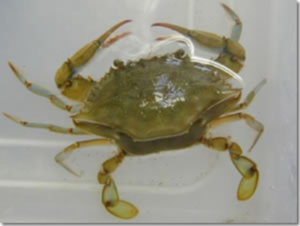 Crabs molt more often when they are small an less often as they grow.
Crabs molt more often when they are small an less often as they grow.
The result of each molt is typically a 25%-40% increase in carapace width.
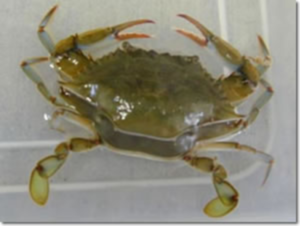 When a blue crab is ready to molt it is known as a “peeler“ crab.
When a blue crab is ready to molt it is known as a “peeler“ crab.
When it starts to molt, the crab cracks the back of the shell between the carapace and the abdomen.
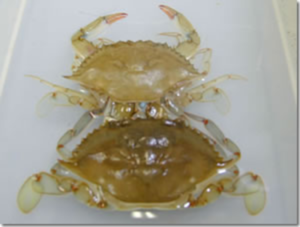 Within a few hours after molting, the new shell begins to harden.
Within a few hours after molting, the new shell begins to harden.
After about 12 hours the shell is slightly stiff and the crab is referred to as a papershell
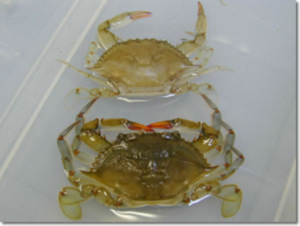 After another 12 hours, the shell becomes harder, yet still pliable and is referred to as a buckram.
After another 12 hours, the shell becomes harder, yet still pliable and is referred to as a buckram.
The total process of molting takes about three to four days to complete resulting in a (bigger) hard shell crab.
The above molting sequence photos by Alicia C. Young-Williams
Without its old hard shell (which, is called a “slough“ when it is discarded), the crab is now temporarily a soft-shelled crab.
The new exoskeleton is there, but it is still very soft and will harden within a few days.
Soft Shell Crab
Without a shell for protection, the crab is extremely vulnerable to predation. They seek shelter in bed if sub aquatic vegetation (SAV) or any for of protection they can find.

